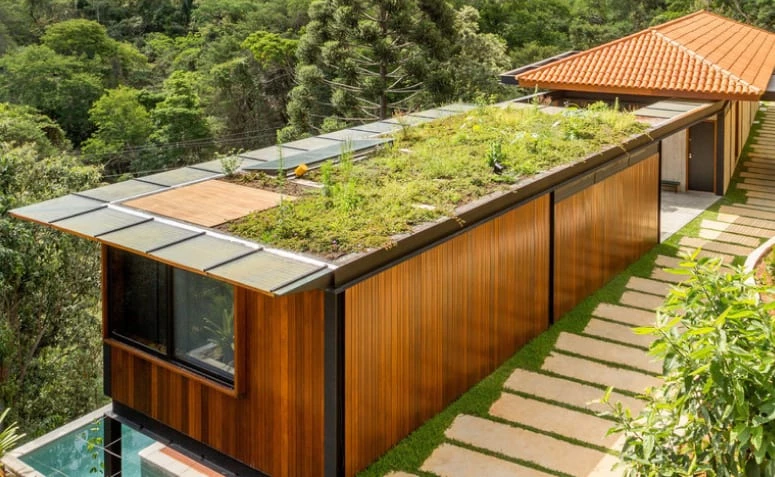Increasingly, new technologies and alternatives are being incorporated into residential projects to reduce environmental impacts and help preserve natural resources. Having a sustainable home means valuing nature and the well-being of its occupants. Learn more about this type of construction and explore environmentally friendly solutions:
Meet the Expert
Andressa Oliveira is an architect and urban planner with a master’s degree in architecture and lighting design. She specializes in growing plants at home and has extensive experience in architectural and interior projects.
Content Index
- What is it
- Ideas
- Videos
- Photos
What is a Sustainable Home?
A sustainable home is built to minimize environmental impact through solutions that save resources, reuse materials, conserve energy, manage waste effectively, and enhance the well-being of everyone involved.
Related Topics
- How to Save Water: 50 tips for daily implementation
- Reusing Objects in Decoration: 55 ideas for turning trash into luxury
Ideas for a Sustainable Home
Small changes and new technologies can greatly enhance the sustainability of a home. Consider the following:
- Eco-friendly or Recyclable Materials
– Image: Sustainable House
– Source: Scali Mendes
Using sustainable materials in construction can conserve natural resources and reduce costs. Options like ecological bricks, bamboo, recyclable flooring, and repurposed containers are both environmentally friendly and practical.
- Maximizing Natural Lighting
– Image: Sustainable House
– Source: Ao Cubo Architecture
Natural lighting reduces the need for artificial lights, saving energy. Investing in large windows or openings will ensure ample daylight in your home.
- Green Roof
– Image: Sustainable House
– Source: Ao Cubo Architecture
A green roof supports vegetation growth, reducing the need for tiles and adding greenery to urban areas. Benefits include lower internal temperatures, soundproofing, and improved air quality.
- Reusing Rainwater
– Image: Sustainable House
– Source: Environmental Sapience
Installing a cistern allows for the collection and reuse of rainwater. This water can be used for washing sidewalks, flushing toilets, and irrigating plants or gardens, potentially saving up to 50% on water bills and conserving water resources.
- Solar Heating
– Image: Sustainable House
– Source: iStock
Utilizing natural light to heat water for showers or taps offers significant advantages, including energy savings and reduced electricity costs.

